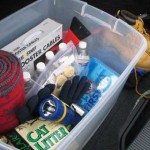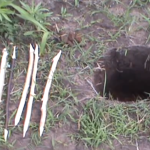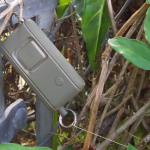Situational awareness involves a range of active observations that help us to understand our surroundings in order to make good judgment calls. It’s a basic survival instinct that every living thing possesses, but it also requires development and practice. Unfortunately, those who do not exercise good situational awareness are usually the ones who end up getting caught up in circumstances that can be risky or even fatal.
Situational awareness is not rocket science or a difficult concept to master. It just requires a continual appreciation of what’s happening, and thinking a few steps ahead in order to make good decisions. In a survival situation, it involves knowing where you are, what you are dealing with and taking appropriate action.
Orient Yourself
The first step is to know where you are. This involves more than knowing east from west. It’s the drawing of mental pictures of your position as well as entry and exit points. It includes knowing what is normal and what is out of place. It’s the observation of routines and patterns as well as paying attention to little details. All of this helps to assess surroundings, monitor activity and prepare to react to abnormalities.
This rule applies to anyone, whether they’ve lived and worked in the same places for their entire lives or just got into town. The more details you observe now will contribute to knowing how to react during a crisis. You should also learn how to orient yourself in unfamiliar places as well. Apply the same techniques when you get to a new area.
It’s also important to learn basic skills that can come in handy if you are completely lost in a wilderness setting. Can you use a compass? Can you read a trail map? Can you measure the amount of daylight left using your fingers or a watch? These hacks are easy to learn and absolutely essential to have when other options are not available. While it is true that a SHTF situation may not drive you to flee into the wilderness, you never know when you will need rudimentary tools to guide you to safety.
Know the Lay of the Land
Where are hiding places? Where can water and food be obtained? Where is the best place to take or build a shelter? What dangers exist in that particular area? All of these questions help to develop a sense of the benefits that can be obtained in a particular area during a survival situation. They also help to alert to potential risks and dangers.
Look at your surroundings and take stock of everything. Note the things that you see, hear and sense. Where can you obtain water or food? Where are the escape routes? What potential threats can you expect to encounter? All of these things should be assessed as you are familiarizing yourself with your surroundings. Once you take stock, then you can start to make good decisions.
Never Take Anything for Granted
Safety, security and access to food, shelter or medical care are usually things that we never think about. We know that the chances of getting into trouble while driving in the city are minimal. We know that we can call 911 and be delivered to a medical facility in minutes if necessary. We know of at least a few stores within a short drive from home that have almost anything that we need. However, the smallest monkey-wrench that is tossed into our systems of modern life can create mayhem in the blink of an eye.
Always be prepared for the unexpected. Expect to be mugged while walking down the street, even if you’ve never had problems before. Expect to be carjacked at an intersection that you don’t think twice about approaching every other day. Know that your grocery store will be looted during a crisis or completely empty if product deliveries can not get there. Always be on alert and always have an exit strategy and back up plan.
Assess for Threats
Know when to hunker down and when to flee, but know where to flee as well. You want to avoid danger at all possible costs instead of walking right into trouble or stepping into a bigger problem. This can include facing a human attacker or a prowling animal. Watch for signs. Learn how to read people and your surroundings. If you are in the wilderness, take stock of what other animals are doing. Are they running? Do you notice tracks from a big animal? Are you intruding in on their territory?
The bottom line is that situational awareness is an active activity, and it takes some practice. However, it’s not hard to get the hang of it either. Start making acute observations of your surroundings and always know where you are, what’s happening and what to do to avoid or escape trouble.

















